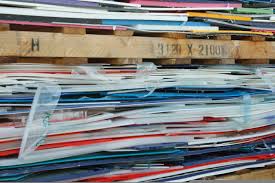Unlocking the Potential of PMMA Acrylic Scrap
Unlocking the Potential of PMMA Acrylic Scrap: A Sustainable Solution for a Circular Economy
Introduction:
In today’s rapidly evolving world, the need for sustainable and eco-friendly solutions has never been more critical. One such area that demands our attention is the management of plastic waste, and in particular, PMMA acrylic scrap. PMMA, or polymethyl methacrylate, is a versatile and widely used thermoplastic known for its transparency, durability, and recyclability. In this article, we will delve into the world of PMMA acrylic scrap, exploring its properties, recycling processes, and the potential it holds for creating a more sustainable and circular economy.
Understanding PMMA Acrylic:
PMMA, commonly known as acrylic or plexiglass, is a transparent thermoplastic often used as a lightweight and shatter-resistant alternative to glass. Its versatility makes it a popular choice in various industries, including construction, automotive, signage, and consumer goods. PMMA boasts excellent optical clarity, weather resistance, and chemical resistance, making it an ideal material for a wide range of applications.
However, like many plastics, PMMA is not immune to the challenges associated with waste management. Discarded acrylic items contribute to the growing issue of plastic pollution. To address this concern, the recycling of PMMA acrylic scrap has emerged as a viable solution.

Recycling PMMA Acrylic Scrap:
Recycling PMMA acrylic scrap involves a series of processes to transform discarded acrylic products into reusable raw materials. The typical recycling process for PMMA includes:
- Collection: Acrylic waste is collected from various sources, such as manufacturing scraps, end-of-life products, or post-consumer waste.
- Sorting: The collected acrylic scrap is sorted based on color and type to ensure a more efficient recycling process.
- Shredding: The sorted PMMA scrap is then mechanically shredded into smaller pieces, facilitating the subsequent processing stages.
- Purification: The shredded acrylic undergoes a purification process to remove contaminants and impurities, ensuring the quality of the recycled material.
- Extrusion or Injection Molding: The purified PMMA is melted and formed into pellets through extrusion or injection molding, creating a recycled material that can be used in various applications.
Benefits of Recycling PMMA Acrylic Scrap:
- Environmental Impact: Recycling PMMA acrylic scrap helps reduce the reliance on virgin materials, conserving natural resources and minimizing the environmental impact associated with the production of new acrylic.
- Energy Savings: The energy required to recycle PMMA is significantly lower than the energy needed to produce virgin acrylic. This results in reduced carbon emissions and contributes to a more sustainable manufacturing process.
- Circular Economy: Incorporating recycled PMMA into the production cycle promotes a circular economy, where materials are reused, reducing the overall waste generated.
- Cost-Effectiveness: Utilizing recycled PMMA acrylic scrap can be a cost-effective alternative to virgin materials, making it an attractive option for manufacturers looking to balance environmental responsibility with economic considerations.
Applications of Recycled PMMA:
Recycled PMMA can be used in various applications across industries. Some common uses include:
- Building and Construction: Recycled PMMA can be incorporated into construction materials such as sheets, panels, and insulation, contributing to sustainable building practices.
- Automotive: The automotive industry can benefit from recycled PMMA in manufacturing interior components, dashboards, and light covers, reducing the environmental footprint of vehicle production.
- Consumer Goods: Recycled PMMA can be used to create a wide range of consumer goods, including packaging materials, household items, and electronic devices.
- Signage and Displays: Given its transparency and durability, recycled PMMA is suitable for signage, displays, and decorative applications.
Conclusion:
As we navigate the challenges of plastic waste and environmental sustainability, the recycling of PMMA acrylic scrap emerges as a promising solution. By understanding the recycling processes, benefits, and applications of recycled PMMA, we can promote a more circular economy and contribute to the responsible use of plastic materials. It is imperative for industries, policymakers, and consumers to embrace the potential of recycled PMMA and work collectively towards a more sustainable and eco-friendly future.
